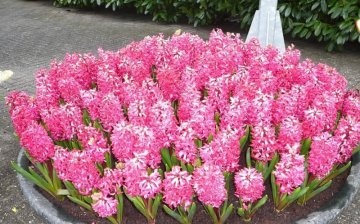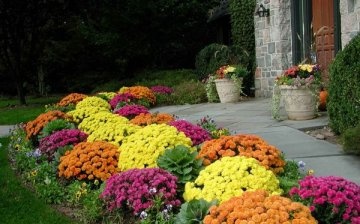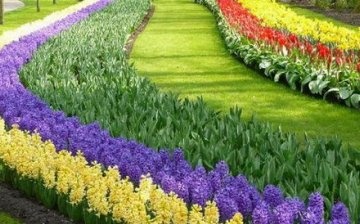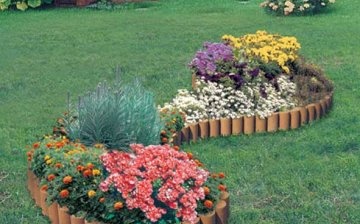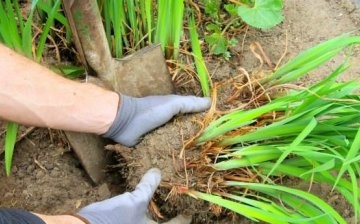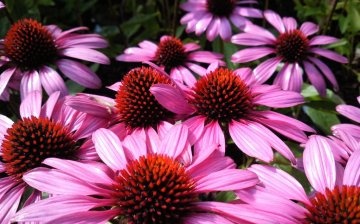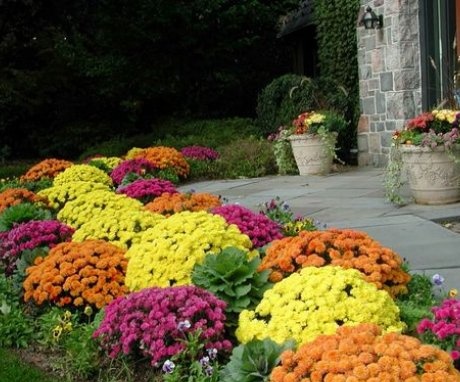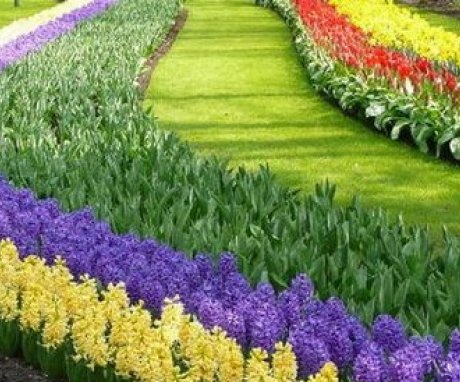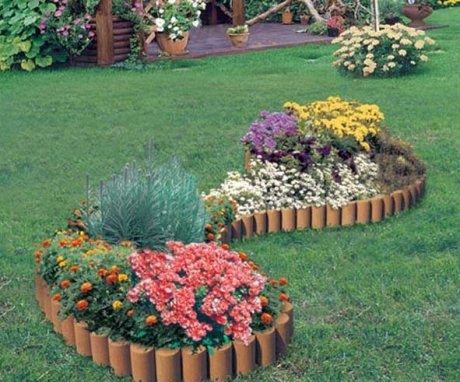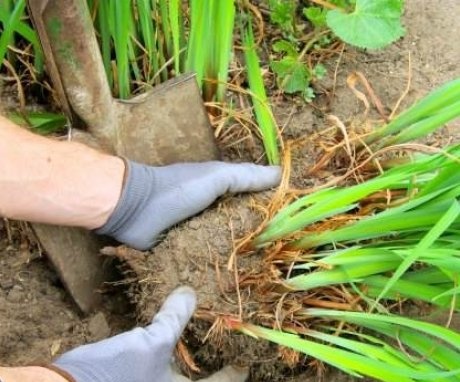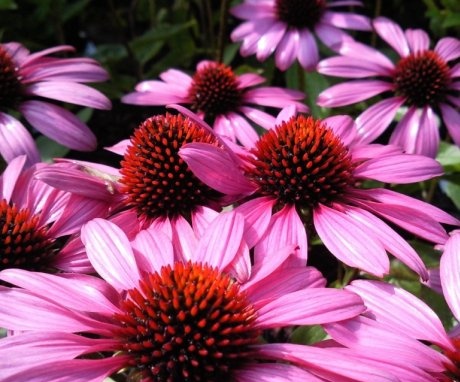What perennial flowers for a flower bed are better to choose and how to place them
Perennial flowers for a flower bed will be a very profitable solution: they do not have to be planted again every year, look for seedlings, remove old plants that are no longer able to give newer shoots. Choice perennials is very wide, and you can choose such plants that will bloom throughout the warm season, decorating your garden and delighting you with a pleasant aroma. The design of flower beds is a kind of art, since they can be turned into a real work of art, in which the widest palette of colors is involved.
Content:
- What are the best flowers to choose?
- Types of flower beds for a summer residence
- Rules for placing flowers in a flower bed
- Location and care of perennial plants
- Medicinal perennials
What are the best flowers to choose?
Perennial flowers can be beautifully combined with ornamental shrubs, in addition, flower beds can be placed at different heights. This will create a truly spectacular and varied design, and the gorgeous bright flower beds will attract attention all summer.
Among the main perennials, which are widespread in gardens, include the following plants:
- Astilba - a plant familiar to many with lush panicle inflorescences. They can be of different colors, from white to dark red, and the size of the bush can also vary greatly. Astilba can grow in one place for more than 10 years, while it is preferable for her to choose shaded corners of the garden.
- Geranium - a flower familiar to almost every gardener. It attracts not only with large inflorescences and bright leaves, but also with a pleasant smell, as well as unpretentiousness. Geranium can be grown in ordinary flower beds, mixborders, it will bloom in spring and early summer.
- Oriental poppy is a plant that will be an excellent decoration for a flower bed due to large flowers with a very bright color. You can plant several varieties of poppies that bloom at different times, then bright buds will appear in the flower bed throughout the summer.
- Daffodils - delicate flowers with very different colors. The daffodil bulb winters calmly even in severe enough cold weather, and in the spring it will sprout again, and very soon the plant will delight you with new buds.
- Crocuses - another traditional spring flower with large white or yellow buds. The most popular today are Dutch hybrids, but different varieties can be planted in multiple beds to keep flowering longer.
- Lilies are delicate plants whose buds bloom mainly in the middle of summer. Lilies are very moody and unstable to sicknessm, so they will have to be carefully look after... However, they will also turn into the best decoration for any flower bed and they can be planted directly near the house.
These are just some of the plants you can use to decorate your garden. Perennials include all types roses, tulips, pansies, peonies, phloxes, gladioli, irises etc.But it is important not only to choose flowers, but also to arrange them beautifully, so that the flower bed turns into a real attraction of the garden and pride for the owner.
Types of flower beds for a summer residence
When planning a flower bed, the artistic taste of the owner of the garden plays an important role; this process can be compared to drawing. Do not overload the palette with too many shades, everything should be perfectly balanced.
There are several types of flower beds, and you can use all of them on the site, if the territory allows.
Let's consider them in more detail:
- Monoclumba - the simplest option, involving the planting of flowers of only one type. Small monoclumba can be located throughout the site, or they can be built in several lines.
- Regular flower beds. In this case, the flowers are planted in the form of regular geometric shapes or lines. At the same time, the flower bed itself can have any shape, but it is better not to make it too large, since it will be difficult to care for a very complex flower garden.
- Irregular flower beds - an option for those who want to show their imagination by planting a variety of plants in the ground. They can contrast in the color of the buds and bloom at different times. In some cases, vegetables are planted in parallel on such a flower bed, for example, pumpkinbut... It looks great with many flowers, and by the fall, ripe hearths will give the flower bed a special charm.
- Raised flower beds (also called vertical). They will not be flat, but multi-level, and at each step you can arrange plants of your own color or their combinations. When choosing flowers, you need to take into account their sensitivity to light, since vertical flower beds are always illuminated unevenly.
For all these options, you can choose a wide variety of plants, however, in all cases, their characteristics and requirements for growth conditions must be taken into account. Aesthetic beauty should not interfere with practicality, otherwise the plants will ache, and the whole flower bed will look ugly.
Rules for placing flowers in a flower bed
There are several basic requirements that every florist must take into account when creating a flower bed:
- Illumination. Most garden flowers are light-loving, so the flower bed should be placed where nothing will block it. but astilba and hostas, on the other hand, prefer shade, so they should not be planted in the open sun. In addition, it is advisable to locate the flower garden where there is no constant strong wind.
- Complexity. If you are just getting started with flowers, do not create overly complex flower beds. Plants grow quickly and it will be difficult to keep an intricate flower garden in order. It is usually much easier to make one flower bed than to care for several small ones, in addition, it is easier to experiment with a combination of colors in a large space.
- Layout. Usually the brightest and most noticeable flowers are placed in the center, and more modest plants can be chosen for framing, for example, yarrow whether the catnip. If you have a wealth of experience, you can turn a simple flower bed into a real artistic canvas, and the magnificent flowers will seem like a fabulous decoration of the site.
- The height of the flowers. They should not block each other, so the row must be strictly selected in height. Low-growing plants such as irises can be used as edging. phloxes, primroses and many others. Then you can plant medium-sized begonias, zinnias, hyacinths etc. In the middle of the flower bed, you can plant ornamental shrubs or the largest flowers that will become noticeable from afar.
- Flowering period. It is advisable to select flowers with approximately the same flowering time for one flower bed. Otherwise, the petals will begin to crumble, destroying the complex thoughtful pattern.
- Soil type. It is difficult to find a soil for each flower that is ideally suited to its composition, so it is worth choosing nutritious black soil, which remains an almost universal solution.
Location and care of perennial plants
The placement of perennials has its own characteristics, since they are planted for more than one year. First of all, this concerns the distance between plants: the newly sprouted shoots seem very small, so you want to plant them as closely as possible. However, it must be borne in mind that they will grow rapidly, and they will no longer have enough space. For example, if you choose a mordovnik for a flower bed, then only 1-2 plants per square meter of a flower bed are enough, otherwise then it will be cramped.
Medium-sized plants are usually planted at 4-5 plants per square meter. meter.
If in the first year the flowerbed looks too empty and bare, annual plants can be planted in free space. They will take place for one year, and in the second year it will already be occupied by overgrown perennials. Keeping a distance will save you from the need to thin out plantings, removing weak dead flowers.
It is not enough just to plant perennials in a flower bed: they will have to be looked after throughout the season to keep them beautiful. The very first problem that growers face is the rapid flowering of some plants. In the middle of summer, many flowers, such as lilies, carnation, lupins, bells begin to lose their petals, and very soon they remain completely without buds. In this case, it is necessary to completely cut off all dry branches and peduncles. They will quickly begin to recover, and soon the flower bed will bloom again.
The same should be done to prolong the blooming of roses. When the flower has completely blossomed, it must be cut off so that the plant does not expend energy on growing a capsule with seeds and their maturation. After such an operation, new flowers will appear on the branches very soon.
Medicinal perennials
In a flowerbed, you can grow not only decorative flowers, but also medicinal plants, which can also be very beautiful. In the future, they can replenish the home medicine cabinet and help in the fight against many diseases.
The most popular garden medicinal herbs are:
- Echinacea - a lush flowering plant, a bit like a large chamomile with pink petals. It can bloom for a very long time, but it also has another meaning: the echinacea rhizome is used both in folk and official medicine as a means of restoring immunity.
- Sage and lavender... These are modest and very beautiful flowers that are popular both for their external beauty and for their excellent calming effect. Herbal teas will be very useful, and the plants themselves will decorate your garden for a long time.
- Calendula (marigolds) are bright orange flowers that, by their very appearance, cheer up. This is a decoration for a flower bed and an excellent remedy for diseases of the respiratory system.
These are just a few examples of how you can make clubs not only very beautiful, but also practical, since all the plants can then be used for medicinal purposes.
Many of the medicinal herbs are perennial, so they don't have to be repotted constantly.
A perennial bed is a great way to get creative. This is a striking detail that decorates the landscape, and the original flower beds will be appropriate on any site. They will help diversify the design and will delight you with magnificent flowering for a very long time.
More information can be found in the video.



